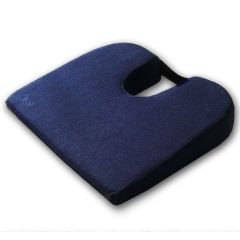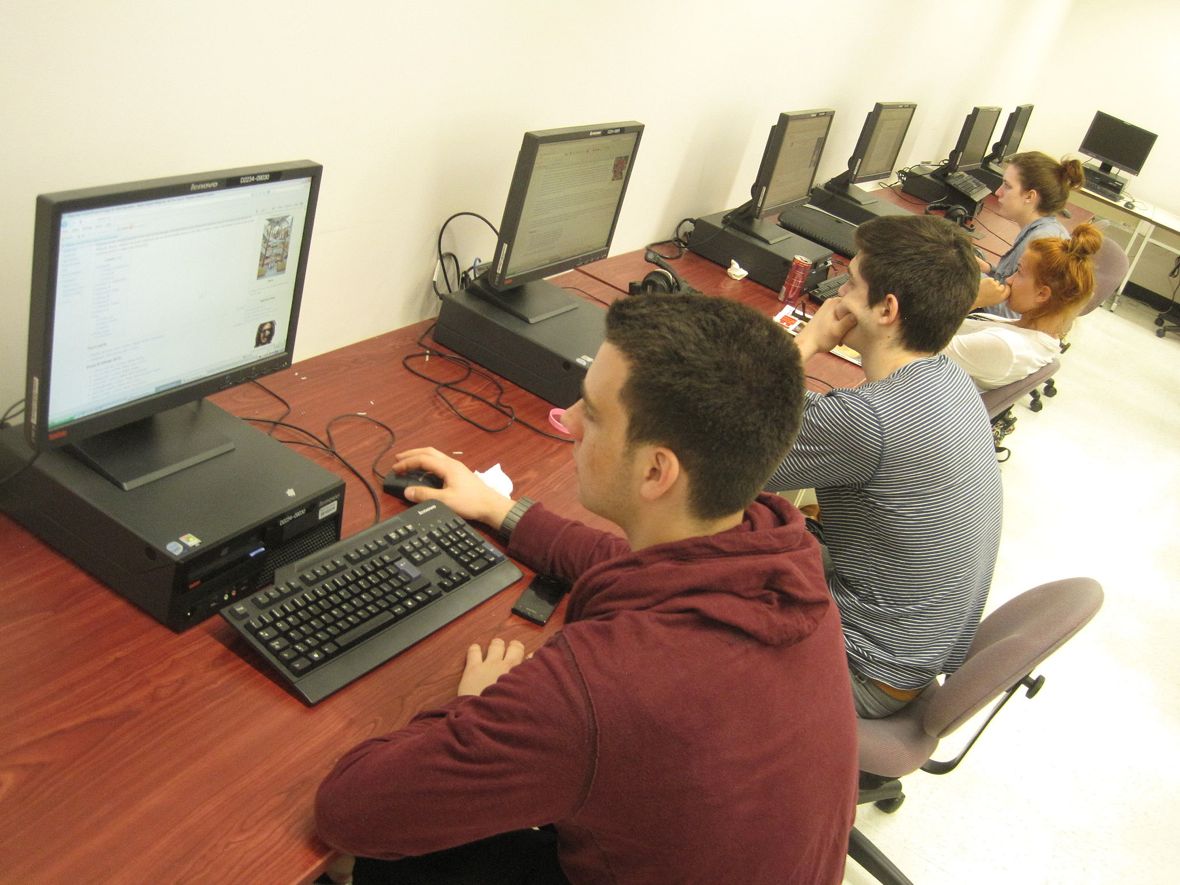Do you struggle with back pain?
The American Chiropractic Association states that one-half of all working Americans suffer back pain symptoms each year.
Talk to any serious writer or office worker and you’ll likely hear about back pain.
“Like many writers,” says author Jana Richards, “I spend a lot of time sitting in front of my computer. Add to that the time I spend working at the computer for my day job and it’s no wonder my back’s been giving me grief.”
My Experience with Back Pain
I experienced my first run-in with back pain in my early thirties. I’d been putting in long hours building up my freelance business, and was writing fiction on the side. Most days I was sitting at the computer for 8-10 hours or more.
One weekend, while cleaning house, I felt an electric pain flash across my lower back. It was so bad it landed me on the floor. I couldn’t move for four hours.
After that, it took me another good couple hours to get back on my feet. For over six weeks, I had to work on my back with my laptop balanced on my stomach. Sitting was just impossible.
The doctor later diagnosed it as a slipped disc. I have a boney growth in the middle of my lower back as a souvenir—and a reminder to never let that happen again!
Since then, I’ve written a lot about back pain. I’ve even ghostwritten a book for a client on the subject, so I could go on and on, but for this post, let me just tell you seven things you may be doing right now that could lead to pain down the road.
The solutions are fairly simple—and definitely preferable to dealing with an injury.
7 Potential Causes of Back Pain
1. Sitting on a flat surface.
Any time you sit on a flat surface, like a chair, you compress the spine. The liquid-filled, cushioning discs between the vertebrae struggle against the force of gravity to hold you upright.
At the same time, sitting requires the lower back to be solely responsible for supporting the upper half of the body. In fact, sitting applies about 1.5 times the compressive force on the spine as standing. The compression is so pronounced that a 2004 study found that sitting actually reduces one’s height.
 To counteract this compression, try a cushion like this one. It gives your spine and tailbone some relief, and lessens some of the pressure on it.
To counteract this compression, try a cushion like this one. It gives your spine and tailbone some relief, and lessens some of the pressure on it.
I find I can sit much more comfortably with one of these, and frankly, couldn’t survive long hours in a chair without one.
Back Pain Cause 2. Failing to get up—often.
Sitting for hours is bad for your overall health, and according to recent studies, can actually shorten your life.
It can also wreak havoc on your back.
Get up at least once an hour to relieve the pressure and take a five minute break. Even better, get up every half hour and move around.
3. Misplacing your equipment.
Computer monitor too high. Chair too low. Keyboard off center. How your working space is set up can either help prevent back pain, or bring it on a lot faster. Some of the most common mistakes:
- Monitor in the wrong place: Set it slightly below your line of sight, about 20-40 inches away from you.
- Keyboard in the wrong place: These are often set too high. You should be able to reach it easily with your elbows bent at a 90-degree angle.
- Bad chair: After years of searching, I finally found a chair that works for me. Getting there cost me some money, though, and I learned that a lot of chairs—even some that cost more—are not that supportive or comfortable. Ask the store for their return policy, then check your chair out thoroughly before you commit. If you work at an office, do everything you can to get a good chair. If you can’t change it, look for cushions and other changes you can make to improve your working space.
- Cramped work spaces: These contribute to overreaching and repetitive stress injuries. Try to organize your space so you have room for everything you need, especially to sit and move comfortably.
Back Pain Cause 4. Slouching.
After sitting in a chair for a long period of time, you naturally get tired, and then your body sags. You pitch forward, slouch down in the chair, and press your head closer to the screen, straining your neck.
Doing this overstretches the spinal ligaments and strains the discs that cushion the bones, setting the stage for pain and potentially damaging the supportive structures of the spine.
Put a note by your desk—every time your body gets tired, stand up and move around, then return to good posture. Keep your head in the middle of your shoulders, shoulders square over your pelvis, and feet slightly apart on the floor.
Sit back in your chair and take advantage of the back support. (If you don’t have it, try to get a more supportive chair.) If you find yourself leaning forward to peer into the screen, sit back then make the text bigger if you need help seeing it clearly. Better yet—print it out and stand up to read and edit.
5. Neglecting the supporting muscles.
This is something I learned after my back injury. Your spine requires the surrounding muscles for strength. Sitting weakens those muscles—fast. The less muscle strength you have to support the spine, the more vulnerable you are to injury and pain.
The solution? Strengthen your core muscles.
That doesn’t have to mean crunches, if that’s not your thing. (I’ve taken up Tae-bo lately and love it!) Choose an exercise that will work for you and that you’ll be able to stick with. Some other options include Pilates, yoga, and lifting weights.
Back Pain Cause 6. Staying tight…and getting tighter.
The other side of strengthening is stretching. One of the most common causes of back pain is tight hamstrings.
According to The Center for the Study and Treatment of Pain at NYULMC, “Patients with tight hamstrings tend to develop low back pain, and those with lower back pain tend to develop tight hamstrings.”
They go on to state that tight hamstrings limit the motion of the pelvis, so the motion is transferred to the lower spine, increasing pressure on it.
Tight hips, abs, and back muscles can also pull the spine out of alignment. This is where regular stretching exercises can really help. Besides, they feel great after a long day in the chair! I use yoga, which works like a charm, and has shown in a number of studies to help relieve work-related back pain, but you can also just adapt some regular stretches to keep yourself limber.
They key is to do them every day. Try them before bed to help you sleep.
7. Failing to manage stress.
Stress creates muscle tension, and for many people, the muscles affected include those in the lower back. A 2012 study found that chronic stress inhibits the body’s ability to regulate inflammation, which of course always leads to pain and other health problems.
Interestingly enough, a 2000 Ohio State University (OSU) study found that introverted people—remind you of anyone?—were more likely to report back pain on the job, because of the psychological stress.
When criticized for doing a “poor” job, introverts were more likely to change the way they used their muscles into unhealthy movements that increased risk of injury. (In other words, introverts “internalize” the negative feedback.)
“For introverts, spinal compression increased by almost 14 percent, while sideways forces on the spine increased by about 27 percent,” OSU says in their statement about the study.
There are a number of ways to relieve stress. Listen to your favorite music, take a break, go for a walk—and oh, yoga works for this one, too. A 2012 study found that participants who took a 50-minute yoga class once a week were less likely to report back pain than those who didn’t. They also reported lower levels of stress.
Do you have other ideas for reducing the risk of back pain? Please share them.
Picture by MCPearson (Own work) [CC-BY-SA-3.0 (http://creativecommons.org/licenses/by-sa/3.0)], via Wikimedia Commons.

